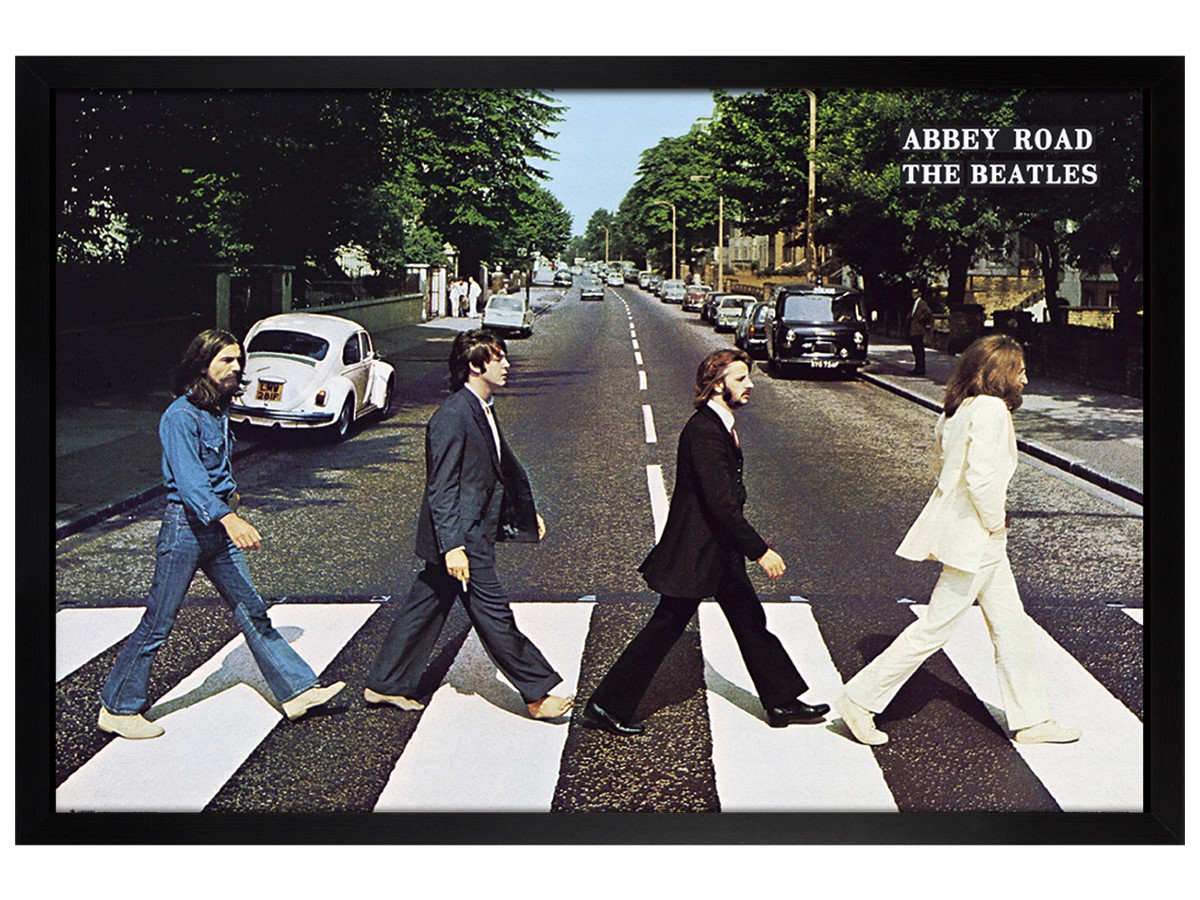

Abbey road album cover professional#
Of where Abbey Road stands in his professional career, Kosh admits: “It's very difficult for me to rank it because it was never quite how I wanted to finish designing it. His subsequent album cover design work after his time at Apple included the Eagles’ Hotel California, Electric Light Orchestra's A New World Record, and James Taylor’s JT. Kosh’s design for the postponed record, Get Back, was later released in 1970 as Let It Be, the Beatles’ final album of original material he also worked on Lennon and Ono’s War Is Over campaign. We're the Beatles.’ So that was the end of that. “I went to Apple Records in the morning,” he continues, “and George Harrison was there, which is also very unusual for a Beatle to show up before 3 in the afternoon. So you can imagine I had a very bad night. “As a 23-year-old, my knees were trembling ( laughs). “It was projected at me that I was ruining the Beatles’ careers,” Kosh remembers of that conversation.

From Kosh’s recollection, Lockwood called him in the middle of the night and read the riot act. Yet the decision also got him into trouble, particularly with Sir Joseph Lockwood, the chairman of Apple Records’ parent company EMI. I just knew it didn't need any explanation whatsoever.” If you do not know who they are, you have definitely been in a cave somewhere.’ It was not necessary-not to mention the fact that there was enough publicity about the Beatles' new album coming out. “I thought, ‘Here are the four Beatles walking across the street. His rationale for that decision is quite understandable, and a bold move at the time. Perhaps Kosh’s biggest contribution to the Abbey Road cover design is what he omitted: the name of the group and the title of the record. I had already been working on the pictures, I didn't know what the record really sounded like. By the time it got to “I Want You (She's So Heavy),” I actually had died, I think ( laughs). He put it on the turntable, and I nearly died. “Very few people had ever heard this album. “Lennon came up and he had under his arm an acetate, which had come from the lathe down in the basement,” Kosh recalls. It happened while he was in the office of Derek Taylor, the band's publicist. Kosh was one of the first people who heard the Abbey Road album before it was officially released. And all of a sudden, it was like, 'Okay, these are the photographs, we need an album cover, bang!' And that's it.” The whole thing was such a rush because I was working on other projects. “Iain, however, would probably tell you a different story-it was going to be an album cover.

“I was under the impression it was for publicity-'we needed pictures,'” Kosh says of Macmillan’s photos. “It was the only one that had their legs in a perfect “V” formation, which is what I wanted stylistically,” Macmillan said in 1989, as quoted in the new boxed set. The idea for the shoot was conceived by Paul McCartney, as Macmillan later recalled the photographer took six images of the musicians from a stepladder and then selected the fifth shot. Fortunately for him, he had at his disposal the photographs that Iain Macmillan took of the Beatles walking on Abbey Road on August 8, 1969. Kosh says the urgency of getting the Abbey Road cover design on time was paramount. But in the middle of all of this, they put that on hold and Abbey Road came in.” “So therefore, we should have a Black Album. “At the time they were working on an album called Get Back,” he explains. As Apple's creative director, Kosh envisioned the design for the next Beatles album to be the opposite of The White Album.


 0 kommentar(er)
0 kommentar(er)
